OPAM Museum Shop Merchandise
OPAM Collaborations
Oota Hatamise × OPAM
Sashiko-ori Goods
Light and strong, “sashiko” is a type of high quality cloth stitching, which guarantees the fabric will be used often. Since Oota Hatamise was established in 1866, the fabric has been used to make hanten short coats used by firemen. Sashiko stitching was nurtured by Japanese culture and ways of life, and has been revived for modern times, and has been developed into a wide variety of products. The cloth is dyed using an old technique called “bungo kata-zome,” where a stencil is used to create a unique dyeing method. These products boast an original design, with a pattern based on traditional Oita bamboo weaving, “yotsume kuzushi,” which was also the motif for the design of the OPAM building.
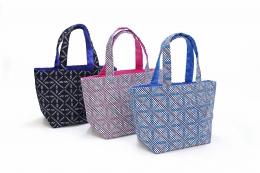 |
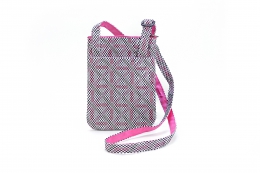 |
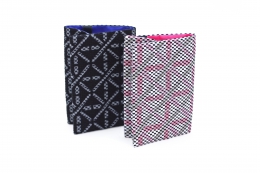 |
| Lunch bag ¥3,456 each(tax included) | Shoulder bag ¥3,888(tax included) | Book cover ¥1,296 each(tax included) |
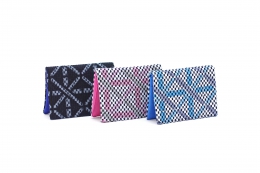 |
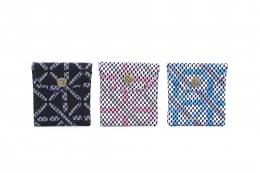 |
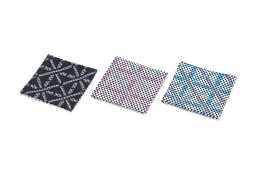 |
| Business card holder ¥1,080 each(tax included) | Coin purse ¥702 each(tax included) | Coaster ¥702 each(tax included) |
Aki Co., Ltd. × OPAM
d-torso Guardian dogs (A・Un)
Paper craft d-torso products are made by cutting and manufacturing cardboard sheets using a precise laser. A layout is printed on each sheet of cardboard, and anyone is able to easily have fun assembling the model without using glue or scissors. The Usa and Kunisaki regions in Oita are known for being the home to Usa Shrine, and therefore are regions that have nurtured the mountain Buddhist culture of Rokugo-manzan that was based on the Hachiman beliefs and the syncretism of Shintoism and Buddhism. This is an OPAM original “komainu-dan” (guardian dog) made with a motif based on the “komainu” guardian dogs associated with this region.
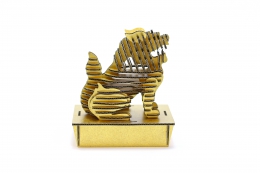 |
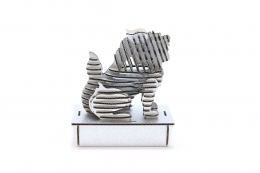 |
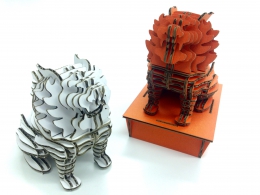 |
| Gold ¥2,160(Tax included) | Silver ¥2,160(Tax included) | Red・White ¥2,052 each(tax included) |
Tajimaya Shinise × Miyake Mai × OPAM
MOTHER OF MERCY
A collaboration between the oldest sweet shop in Oita, Tajimaya Shinise, and the artist Miyake Mai – a sweet that combines a traditional and a modern feeling. Tajimaya Shinise’s main shop is located in Taketa City, Oita Prefecture, which was the region of a Christian feudal lord. The richness of the fusion between old Japanese culture and foreign culture has been infused into a simple Japanese traditional hard candy called “rakugan,” through the combination of a gentle milk taste that evokes the image of the Virgin Mary and the accent of a Western mint flavour. The packaging has been designed by Taiji Fukimori Studio, and has a linked design that resembles church stained glass windows or European or Taketa cobble pavements.
〈Best before date〉 60 days after the date of manufacture 〈Handling〉 Keep at a fixed temperature, consume soon after opening.
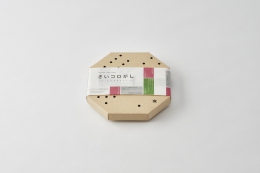 |
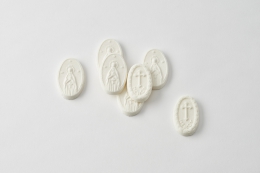 |
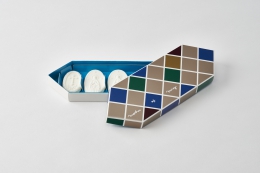 |
| ¥1,620(tax included) | Photos:©Ryoukan Abe |
Tajimaya Shinise × Miyake Mai × OPAM
Saikoro-gashi
A collaboration between the oldest sweet shop in Oita, Tajimaya Shinise, and the artist Miyake Mai – a sweet that combines a traditional and a modern feeling. Tajimaya Shinise’s representative sweet was reborn to coincide with the opening of OPAM and is made with gentle egg whites and healthy agar. The packaging is a drill design, with dice-markings dotting the lid like star constellations. The packaging also includes a dice board. The dice-shaped sweets roll around inside the vessel in the lid that rolls the dice, so you can enjoy artist sugoroku (a Japanese game). Included in the box of sweets, is a sugoroku game piece, so you can use the sweets to play a game. When you have finished playing the game, or if you get hungry while you’re playing the game, you can eat the dice sweets.
〈Best before date〉 60 days after the date of manufacture 〈Handling〉 Keep at a fixed temperature, consume soon after opening.
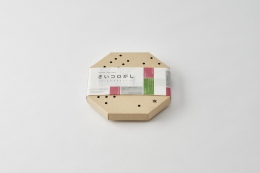 |
 |
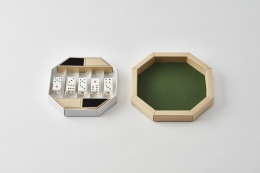 |
| ¥1,728(tax included) | Photos:©Ryoukan Abe |
Bamboo craftwork × OPAM
Oita Prefecture produces a large amount of Japanese madake bamboo, and a unique bamboo craftwork culture has developed centered in Beppu. Oita Prefectural Art Museum boasts a collection of works by bamboo craftwork artists both from Oita and from other places, with particular focus on the works of the representative national treasure in this field, Shounsai Shono (1904-1974), and is proud to have the leading number of bamboo craftwork art pieces and content nationally. The foyer roof, outside walls, pedestrian deck, and so on, of the Shigeru Ban-designed OPAM building have bamboo craftwork as their motif, creating a memorable design. The museum shop sells OPAM original goods created by bamboo craftwork artists working within the prefecture.
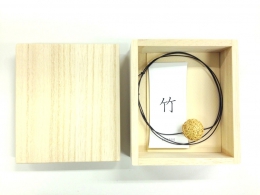 |
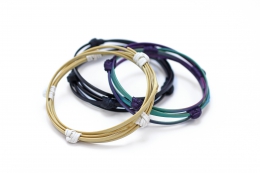 |
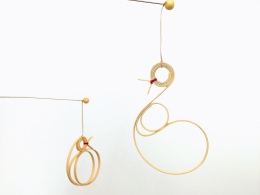 |
| Hajime Nakatomi Necklace(cotton wire) ¥6,480(tax included) | Kyoko Morotomi/Morokuro Workshop Bracelet ¥6,480(tax included) | Tokuzo Shouno Mobile ¥5,400(tax Included) |
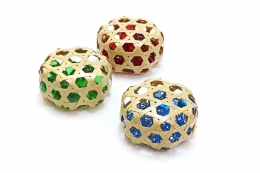 |
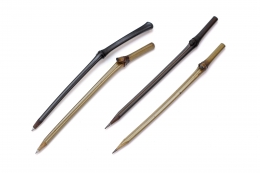 |
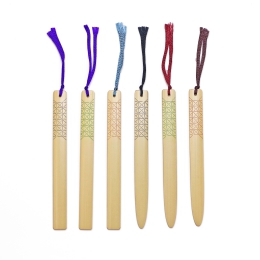 |
| Shigeo Kawashima Paperweight ¥2,376(tax included) | Shigeo Kawashima Bamboo ball-point pen ¥594(tax included) Bamboo pencil ¥486(tax included) | Haruo Sato Bookmark ¥1,080(tax included) |
OPAM logo products
Original merchandise planned and designed by the Communication Design Laboratory, which manages the “OPAM” logo.
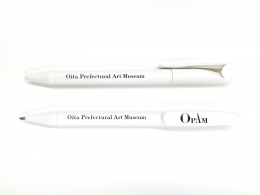 |
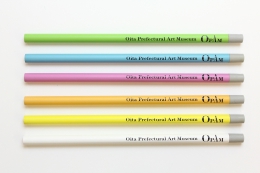 |
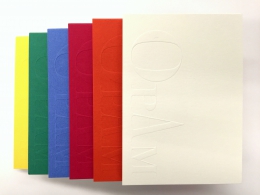 |
| Ball-point pen with logo ¥648(tax included) | Colouring pencils with logo ¥216 each(tax included) | Memo pad with logo ¥432 each(tax included) |
Other goods are available, such as exhibition books, post cards, crafts made by prefectural artists, and much more.
For more details, please contact the museum shop.
Tel: 097-529-5177
Fax: 097-529-5187
E-mail: opam-ms@auc-cop.co.jp















